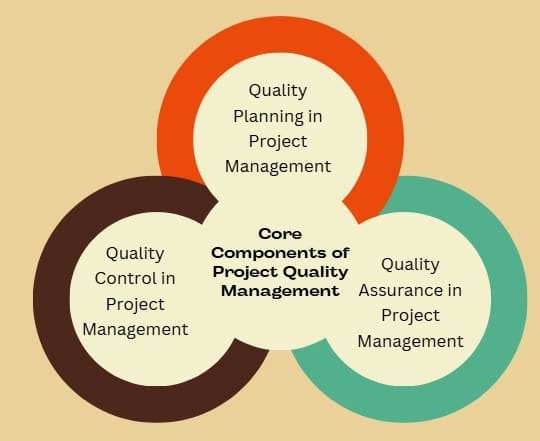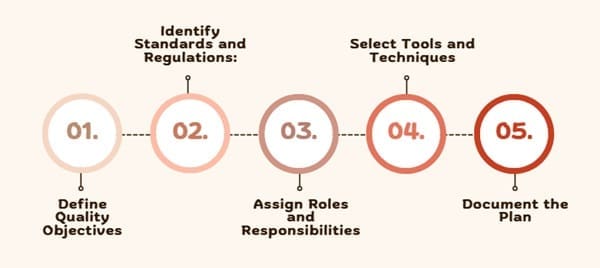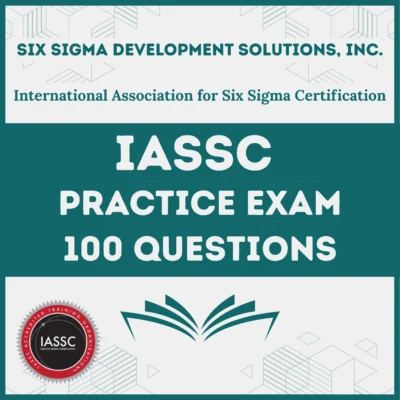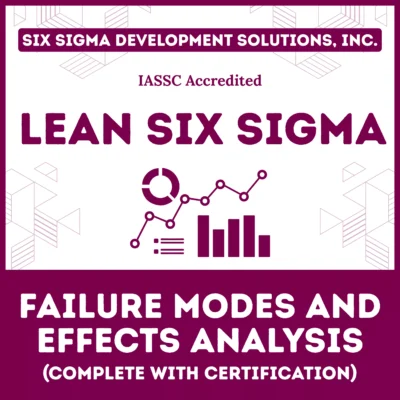Projects fail not because teams lack technical skills or resources, but because they compromise on quality. A software application launches with critical bugs. A construction project requires expensive rework. A marketing campaign delivers off-brand messaging. These quality failures cost organizations millions annually while damaging reputations and client relationships.
The difference between projects that succeed and those that struggle often traces back to how seriously teams approach quality from the very beginning. Quality cannot be inspected into a project at the end—it must be built in from conception through completion.
Project quality management provides the framework for ensuring deliverables meet requirements, satisfy stakeholders, and achieve intended business outcomes. By implementing systematic quality processes, project managers transform vague expectations into concrete standards, prevent defects before they occur, and create value that lasts long after project closure.
Table of contents
- What is Project Quality Management?
- Core Components of Project Quality Management
- Manage Quality vs. Control Quality (PMP Perspective)
- Benefits of Effective Project Quality Management
- Developing a Quality Management Plan
- Quality Management Strategies and Tools
- Examples
- Challenges in Project Quality Management
- Best Practices for Project Quality Management
- FAQs About Project Quality Management
- Final Words
- Related Articles
What is Project Quality Management?
Project quality management is the discipline of planning, organizing, and controlling processes to ensure a project’s deliverables meet predefined standards and stakeholder expectations. It involves three key processes: quality planning, quality assurance, and quality control. Together, these processes ensure that a project not only meets its objectives but also delivers consistent, reliable results.
Think of project quality management as the compass guiding your project. It ensures that every task, from design to delivery, aligns with the project’s goals. For example, in a software development project, quality management ensures the app is user-friendly, bug-free, and meets client requirements.
Why is Project Quality Management Important?
Quality isn’t an afterthought—it’s a critical driver of project success. Poor quality can lead to rework, delays, cost overruns, and unhappy stakeholders. By contrast, effective quality management in project management delivers:
- Customer Satisfaction: High-quality deliverables meet or exceed client expectations.
- Cost Efficiency: Catching issues early reduces expensive rework.
- Risk Mitigation: Proactive quality checks prevent costly mistakes.
- Team Confidence: Clear quality standards empower teams to perform at their best.
For instance, a construction project with a robust project quality management plan can avoid costly errors like faulty wiring, saving time and ensuring safety.
Public, Onsite, Virtual, and Online Six Sigma Certification Training!
- We are accredited by the IASSC.
- Live Public Training at 52 Sites.
- Live Virtual Training.
- Onsite Training (at your organization).
- Interactive Online (self-paced) training,
Core Components of Project Quality Management

Project quality management revolves around three interconnected processes. Let’s break them down:
1. Quality Planning in Project Management
Quality planning sets the stage for success by defining quality standards, objectives, and metrics. The quality management plan outlines how the team will achieve these standards, including tools, processes, and responsibilities.
Key steps in quality planning include:
- Identifying stakeholder requirements.
- Defining measurable quality standards (e.g., performance, reliability, usability).
- Selecting tools and techniques, such as checklists or benchmarking.
- Documenting the plan in a project quality management plan.
For example, a marketing team launching a campaign might define quality metrics like audience engagement rates or conversion goals to ensure the campaign resonates with its target audience.
2. Quality Assurance in Project Management
Quality assurance (QA) focuses on preventing defects by ensuring processes are followed correctly. It’s about building quality into the project from the start, rather than fixing issues later. QA involves regular audits, process reviews, and adherence to the quality management plan.
QA activities include:
- Conducting process audits to verify compliance.
- Training team members on quality standards.
- Using tools like flowcharts or cause-and-effect diagrams to improve processes.
For instance, in a manufacturing project, QA might involve regular checks to ensure machinery operates within specified tolerances, preventing defective products.
3. Quality Control in Project Management
Quality control (QC) involves monitoring and measuring deliverables to ensure they meet quality standards. Unlike QA, which focuses on processes, QC focuses on outputs. It includes testing, inspections, and corrective actions to address defects.
Common QC techniques include:
- Inspections to verify deliverables meet requirements.
- Statistical sampling to test a subset of outputs.
- Root cause analysis to identify and fix issues.
For example, in a website development project, QC might involve testing the site across browsers to ensure compatibility and functionality.
Also Read: Principles of Total Quality Management (TQM)
Manage Quality vs. Control Quality (PMP Perspective)
In the Project Management Professional (PMP) framework, manage quality (QA) and control quality (QC) are distinct but complementary. Manage quality ensures processes are effective, while control quality verifies deliverables meet standards. Together, they form a proactive and reactive approach to quality management.
Benefits of Effective Project Quality Management
Implementing a robust quality management program offers numerous advantages:
- Enhanced Stakeholder Trust: Consistent quality builds confidence among clients and teams.
- Reduced Costs: Early defect detection minimizes rework and waste.
- Improved Efficiency: Streamlined processes save time and resources.
- Competitive Advantage: High-quality deliverables set your project apart.
For example, a software company that prioritizes project quality assurance can release a product with fewer bugs, gaining a reputation for reliability and attracting more customers.
Developing a Quality Management Plan

A project quality management plan is the roadmap to achieving quality goals. It outlines the standards, processes, and tools needed to ensure quality throughout the project lifecycle. Here’s how to create one:
- Define Quality Objectives: Align objectives with stakeholder expectations, such as performance, durability, or compliance.
- Identify Standards and Regulations: Ensure the project complies with industry standards (e.g., ISO 9001 for quality management).
- Assign Roles and Responsibilities: Clarify who is responsible for QA and QC tasks.
- Select Tools and Techniques: Choose methods like Pareto charts, control charts, or Six Sigma for quality analysis.
- Document the Plan: Create a clear, accessible document that guides the team.
For instance, a construction project’s quality management plan might specify that concrete must meet specific strength standards, with regular testing to verify compliance.
Also Read: Supplier Quality Management
Quality Management Strategies and Tools
To achieve quality goals, project managers rely on proven quality management strategies and tools. Here are some popular approaches:
- Six Sigma: A data-driven methodology to reduce defects and improve processes. It uses tools like DMAIC (Define, Measure, Analyze, Improve, Control).
- Lean: Focuses on eliminating waste to improve efficiency and quality.
- Total Quality Management (TQM): Emphasizes continuous improvement across all processes.
- Cause-and-Effect Diagrams: Identify root causes of quality issues.
- Control Charts: Monitor process stability over time.
Modern project management quality assurance tools, such as Jira, Trello, or Minitab, streamline these processes by tracking metrics, automating audits, and facilitating collaboration.
Examples
Let’s explore a few project quality management examples to see its impact in action:
1. Software Development
A tech company developing a mobile app uses a quality management plan to define usability and performance standards. QA involves code reviews and user testing, while QC includes bug tracking and performance testing. The result? A polished app with high user satisfaction.
2. Construction Project
A contractor building a bridge implements project quality control by testing materials like steel and concrete. QA ensures workers follow safety protocols, reducing the risk of structural failures and ensuring the project meets regulatory standards.
3. Event Planning
An event planner uses quality planning in project management to ensure a conference runs smoothly. The plan includes checklists for venue setup, speaker coordination, and attendee experience. QC involves post-event surveys to measure satisfaction and identify improvements.
These examples highlight how quality in project management drives success across industries.
Challenges in Project Quality Management
While project quality management is essential, it comes with challenges:
- Balancing Cost and Quality: High quality often requires more resources, which can strain budgets.
- Stakeholder Expectations: Differing views on “quality” can create conflicts.
- Resource Constraints: Limited time or expertise can hinder QA and QC efforts.
- Maintaining Consistency: Ensuring quality across large, complex projects is difficult.
To overcome these, prioritize clear communication, use data-driven tools, and align quality goals with project objectives.
Best Practices for Project Quality Management
To excel in managing project quality, follow these best practices:
- Involve Stakeholders Early: Gather input to align quality standards with expectations.
- Use Data-Driven Tools: Leverage software like Minitab or Quality Companion for accurate analysis.
- Train Your Team: Ensure everyone understands quality processes and tools.
- Monitor Continuously: Regular audits and inspections keep quality on track.
- Adapt and Improve: Use lessons learned to refine processes for future projects.
FAQs About Project Quality Management
What is a quality management plan?
A quality management plan is a document that outlines how a project team will achieve quality objectives. It defines standards, processes, tools, and responsibilities for QA and QC.
What is the difference between quality assurance and quality control?
Quality assurance focuses on preventing defects by improving processes, while quality control involves inspecting deliverables to ensure they meet standards.
Why is project quality management important?
Project quality management ensures deliverables meet stakeholder expectations, reduces rework, mitigates risks, and enhances efficiency, leading to successful project outcomes.
What tools are used in project quality management?
Common tools include Six Sigma, Lean, control charts, cause-and-effect diagrams, and software like Jira, Minitab, or Microsoft Project for tracking and analysis.
How can small projects benefit from quality management?
Even small projects benefit from quality management in project management by improving efficiency, reducing errors, and ensuring deliverables meet expectations, saving time and resources.
Final Words
Project quality management is the backbone of successful projects. By integrating quality planning, quality assurance, and quality control, project managers can ensure deliverables meet high standards, satisfy stakeholders, and deliver lasting value. From defining a quality management plan to leveraging tools like Six Sigma, quality management empowers teams to achieve excellence.
Whether you’re building software, constructing a building, or planning an event, prioritizing quality in project management sets you apart.



















